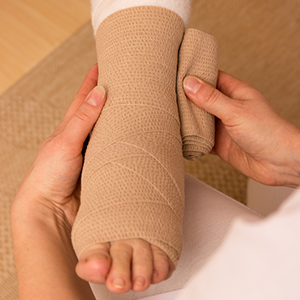Advantages and disadvantages
Sclerotherapy is used to treat varicose veins and spider veins. Substances are injected into the veins damaging the latter’s walls. With the additional pressure of a compression stocking or bandage, the walls stick together and the blood vessel is “shut down”
The sclerosed veins are reabsorbed by the body so they disappear altogether. Blood is then transported by other veins in the immediate area.
An examination of the sublobular veins and their large proximal tributaries is essential to establish that the venous valves in the thigh are working properly. Otherwise the sclerotherapy will have no effect as the blood would immediately congest again from above.
On the other hand, sclerotherapy contains some risks. Is the substance injected by mistake into the surrounding tissue, inflammation might be the result that is only slow to heal. Should it, in fact, enter an artery, blood clots might be the possible consequence. The blood flow slows down, the tissue lying behind does not receive enough oxygen and is damaged. Unpleasant cutaneous necrosis is the result.
Foam sclerotherapy
By means of sclerotherapy with foamed sclerosing agent, large varicose veins can be treated more effectively. With this process sclerosing foam is injected into the affected vein under ultrasonographic guidance. This leads to slight inflammation of the vein which then closes and is later reabsorbed. The ultrasound image enables veins not visible to the eye to be located and undergo sclerosis.
Foam sclerotherapy is, except for the injection, mostly free of pain. No disturbing scars remain, mobility is not hindered and the patient can resume work immediately. Also following foam sclerotherapy compression stockings should be worn for a certain period of time.

